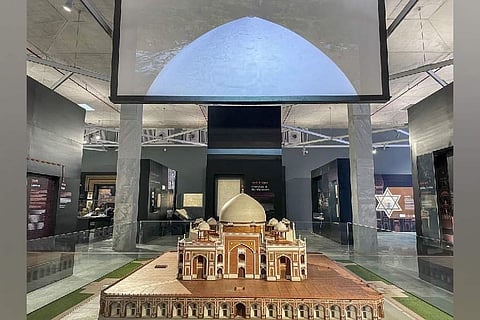

With the opening of India's first sunken museum at the Humayun's Tomb Complex, Delhi, a city rich in culture and history, has gained yet another gem. This cutting-edge museum, which opened on July 29th, aims to provide a singular and captivating experience by fusing contemporary architectural design with the rich legacy of the Mughal Empire.
The museum, which features more than 500 objects, many of which are being shown to the public for the first time, was formally opened by Union Culture Minister Gajendra Singh Shekhawat. Inspired by ancient 'baolis', or water tanks, the museum provides information on the rich history of the Nizamuddin region and the reign of the Mughal emperor Humayun.
The museum, which was created by the Aga Khan Trust for Culture in partnership with the Archaeological Survey of India (ASI), is the result of 25 years of restoration work on the 300-acre property, which also includes Nizamuddin Basti, Sunder Nursery, and Humayun's Tomb.
The museum also has an immersive gallery with a 270-degree screen that shows an animated display about the development of Humayun's Tomb over the past 500 years and offers virtual tours of the monuments and gardens of the World Heritage Site.
The museum embraces contemporary cultural heritage and makes use of state-of-the-art technology to improve the experience of its visitors. The painstaking reconstruction of the Nizamuddin Dargah complex's development timeline in the fourteenth century using 3-D movies and intricate wooden scale models is a highlight.
With its unique insight into the magnificence of Mughal India, the submerged museum at Humayun's Tomb is certain to become a must-visit location for history buffs, lovers of architecture, and inquisitive travellers alike.
.png?w=50&fm=png)